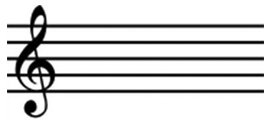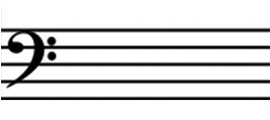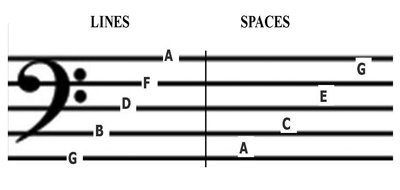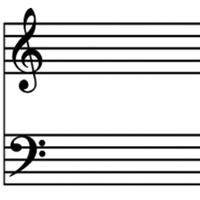|
The Musical Staff or StaveThe musical staff or stave is the diagram on which musical symbols such as notes, rest, clef signs, sharp and flat are placed. The staff or stave has five lines and four spaces. Here is what the staff looks like.
There are two types of staves that are frequently used in music. They are the treble staff and Bass staff. It is important to note that a staff is named based on the clef sign that is placed on it. For example - When the treble clef is placed on the staff, the entire staff can be referred to as the “treble staff”. The same thing happens when the bass clef is placed on the staff. HERE IS WHAT THE TREBLE STAFF LOOKS LIKE. 
HERE IS WHAT THE BASS STAFF LOOKS LIKE. 
Each line and space of the staff represents pitches from low to high. Each line and space is assigned a specific letter from the musical alphabet. The letters of the musical alphabet are A, B, C, D, E, F and G. These seven letters represents the natural tones of the twelve tones in music. The other five tones or pitches are called sharp or flat and normally takes the name of the natural letters that exist in music. FOR EXAMPLE ...

Both the treble staff and bass staff are used when you are reading sheet music especially the ones that are written for the piano. Below are two diagrams showing the letter names of the treble and bass staff.
THE LETTER NAME OF THE LINES AND SPACES OF TREBLE STAFF
THE LETTER NAME OF THE LINES AND SPACES OF THE BASS STAFF
When both treble and bass staffs are joined together, they form what is called the grand staff. Below is a picture of the grand staff.
The grand staff is designed for keyboard instruments such as the piano and organ. Therefore it is very important that you know how to read the treble and bass staff fluently. When you are able to read each staff fluently, you will be better able to read of them together. The musical staff or stave is the main frame for all musical symbols used in music. In order for a pianist to read music fluently, they have to know how to read and apply all symbols that are placed on the staff.
|








